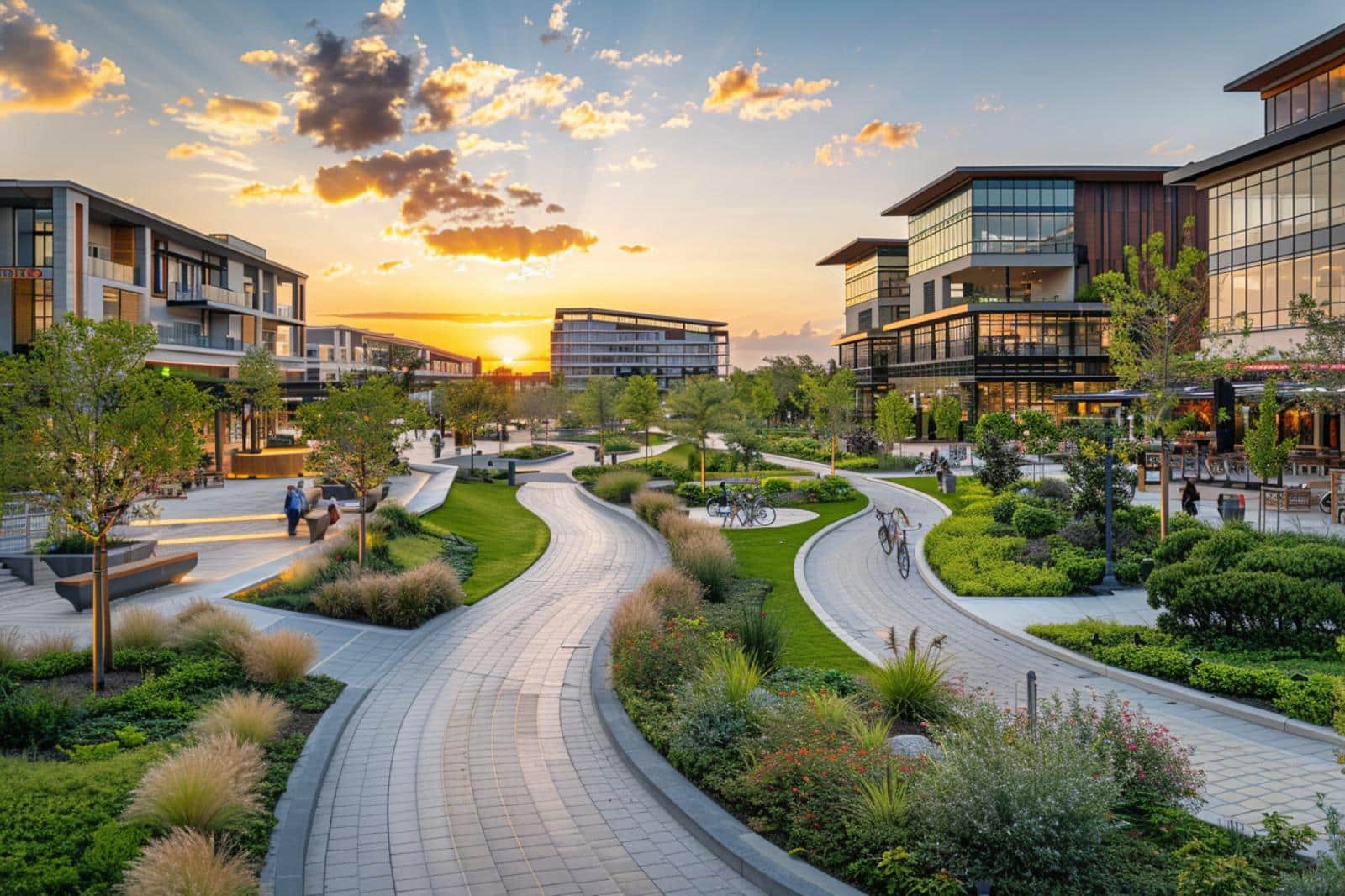How can real estate developments be designed to facilitate and encourage non-motorized transportation?

In the midst of rampant urban development, the importance of sustainable modes of transportation cannot be overstated. Non-motorized transit like walking or cycling are not only environmentally friendly but also contribute to the physical health and mental well-being of people. As we delve into this topic, we will explore how real estate developments can be designed to foster and promote these modes of transportation in urban areas. We will touch upon the benefits of such planning, the role of the government, and the positive impacts on traffic, pedestrians and overall life in cities.
The Benefits of Non-Motorized Transit
It’s essential to understand the numerous benefits of non-motorized transportation before delving into the ways real estate developments can contribute to this cause. Walking, cycling, or any form of movement that doesn’t involve a motorized vehicle, offers a plethora of advantages.
A lire aussi : What innovative waste management strategies can be employed in high-density real estate projects?
These modes of transportation not only reduce traffic congestion but also curtail air and noise pollution associated with motorized vehicles. They provide a cost-effective alternative, contributing to the economic well-being of individuals and cities alike. Furthermore, they foster more active and healthier lifestyles, keeping chronic diseases like obesity and heart issues at bay. Lastly, they make cities safer – fewer cars on the road mean fewer accidents.
Urban Planning: Promoting Pedestrian and Bicycle Movements
Urban planning lies at the heart of the promotion of non-motorized transportation. Thoughtfully designed developments can make walking and cycling enjoyable, convenient, and safe options for daily commuting.
En parallèle : How to leverage passive architectural design to reduce energy consumption in new real estate developments?
Pathways should be designed to cater to both pedestrians and cyclists, keeping in mind their differing speeds and space requirements. Wide, paved sidewalks, well-marked bicycle lanes, and roadways incorporating "Complete Streets" design principles can help achieve this.
In addition, connectivity is key. Ensuring that homes, workplaces, schools, recreational areas, and other key destinations are well connected can encourage people to walk or cycle rather than take a car. Mixed-use development that integrates residential and commercial spaces can drastically cut down commute distances and promote non-motorized transit.
Government Role: Policies and Regulations
Government entities play a crucial role in encouraging non-motorized transportation through effective policies and regulations.
Zoning laws and building codes can be revised to incorporate elements that encourage walking and cycling. For instance, developers can be mandated to provide secure bicycle parking facilities in their projects. Tax incentives or subsidies could be offered to developments incorporating non-motorized transit-friendly features.
Moreover, the government can invest in improving the cycling and pedestrian infrastructure in cities. This includes creating safe and well-lit bicycle lanes and sidewalks, installing proper signage, and ensuring regular maintenance.
Traffic Management for Promoting Non-Motorized Transit
Traffic management strategies can significantly promote non-motorized transit. These strategies can ensure safety, encourage people to switch to sustainable modes of transportation, and make cities more livable.
Traffic calming measures such as speed humps, roundabouts, and chicanes can slow down vehicles, making roads safer for cyclists and pedestrians. Furthermore, implementing restrictions on motorized vehicles in certain areas, especially during peak hours, can encourage non-motorized transit.
Community Engagement: Creating a Culture of Non-Motorized Transit
Promoting non-motorized transportation isn’t just about infrastructural changes — it’s about creating a cultural shift. Encouraging communities to embrace walking and cycling demands consistent community engagement.
Organizing events like ‘Car-Free Days’ or ‘Cycle to Work Days’ can help inculcate the habit of non-motorized transit among residents. Further, awareness campaigns highlighting the benefits of walking and cycling can drive home the message.
By designing real estate developments with the intention of promoting non-motorized transit, we can create sustainable urban spaces that prioritize the health of people and the planet. While this requires concerted efforts from developers, government entities, and communities, the resulting benefits make it a pursuit worth striving for.
The Economic Benefits of Non-Motorized Transportation
In addition to promoting public health and contributing to sustainable development, non-motorized transportation holds significant economic benefits. Delving deeper into the cost-effectiveness of active transportation, we will explore how these benefits extend from individuals to communities and, ultimately, the economy as a whole.
For individuals, walking and cycling are essentially free modes of transport. This aspect, when considered in the wider scope of personal finances, can lead to significant savings, particularly for those living in urban areas where public transport costs can be high. Moreover, non-motorized transit reduces dependency on motor vehicles, thereby bringing down expenses related to fuel, parking, and vehicle maintenance.
From a community perspective, promoting non-motorized transportation can lead to reduced traffic congestion, resulting in fewer resources spent on road expansion and maintenance. This, coupled with lower air and noise pollution, can contribute to a higher quality of living and increased property values, thereby benefiting both residents and real estate developers.
On a macro level, the economic benefits extend to improved public health, resulting in lower healthcare costs for both individuals and the state. According to a study conducted in Los Angeles, a mere 1% shift from car trips to bicycle trips resulted in an annual healthcare cost saving of over $400 million. Further, the construction projects involved in improving non-motorized transit infrastructure can stimulate local economies by creating jobs.
Advocating for non-motorized transportation then, is not just an environmentally sound development policy, but also a sound economic strategy.
Non-Motorized Transit and Public Transportation: A Complementary Relationship
Active transportation and public transport often go hand-in-hand in creating an efficient and sustainable transport system in urban areas. This section will delve into how these two modes of transit can complement each other, and the role of real estate developments in facilitating this.
Public transportation acts as a backbone for active transportation, particularly in large cities. It allows for longer distances to be covered quickly and efficiently, while walking and cycling can serve as the ‘last mile’ solution. This intermodal transportation can drastically reduce the use of private cars, thereby reducing traffic congestion and improving air quality.
Real estate developments can play a significant role in facilitating this relationship. Transit-oriented developments, or TODs, are a prime example of this. These developments are designed with a focus on accessibility to public transport stations, with an emphasis on creating pedestrian and bicycle-friendly environments. This not only encourages residents to use public transportation, but also makes active transportation a viable and convenient option for short distances.
Strategically locating these developments near key transit stations can make non-motorized transit a natural choice for residents. In the United States, studies have shown that people living in TODs own fewer cars and are more likely to use public transportation. By designing real estate developments that support both non-motorized and public transportation, we can foster sustainable transport habits and create more livable cities.
Conclusion
In conclusion, designing real estate developments to facilitate and encourage non-motorized transportation is key to creating sustainable urban environments. The benefits of making such a shift are numerous – from improved public health and air quality to significant economic gains.
While achieving this requires a concerted effort from all stakeholders – including government entities, real estate developers, and communities – the outcome is well worth the investment. By promoting non-motorized transit through thoughtful urban planning, we can contribute to the physical, mental, and economic well-being of individuals and communities, while also playing our part in reducing environmental pollution.
As urban populations continue to grow, the need for sustainable transport solutions becomes ever more pressing. Let’s embrace the shift towards non-motorized transit and work towards creating cities that are not just livable, but also enjoyable for all.
